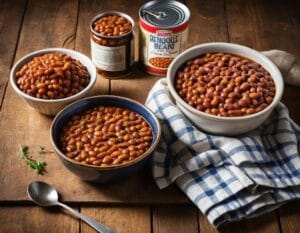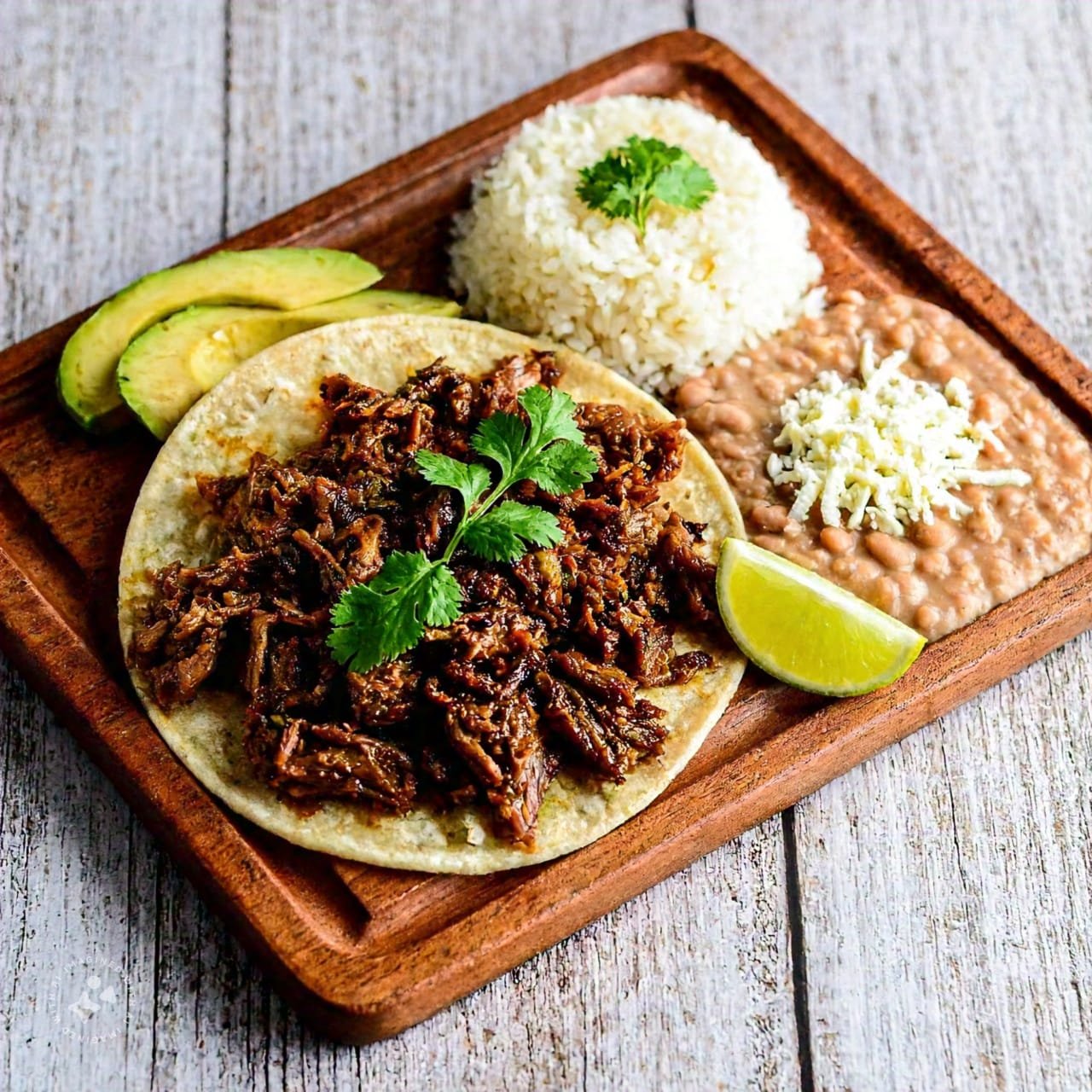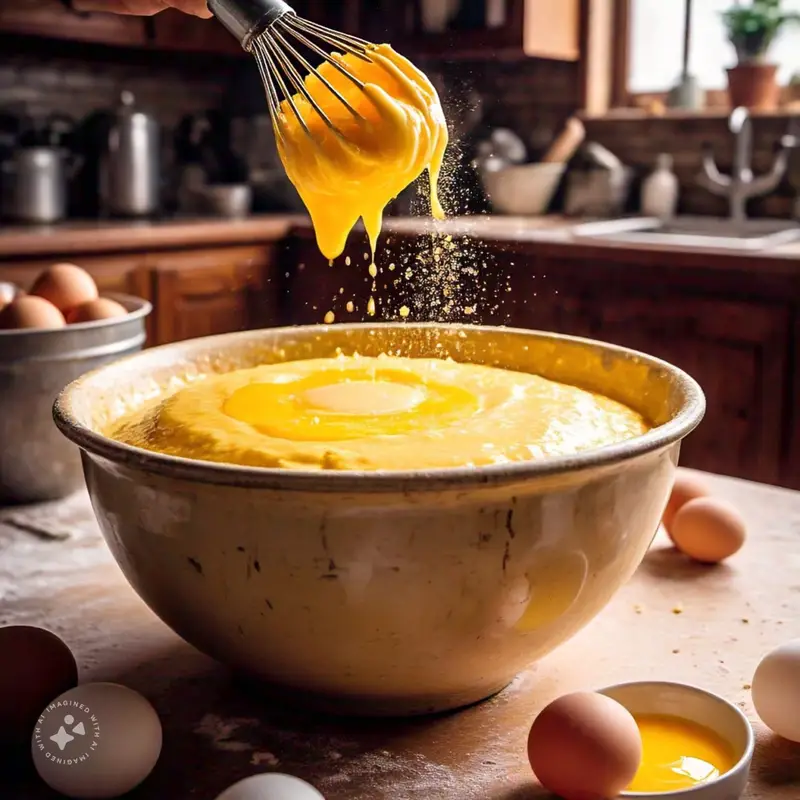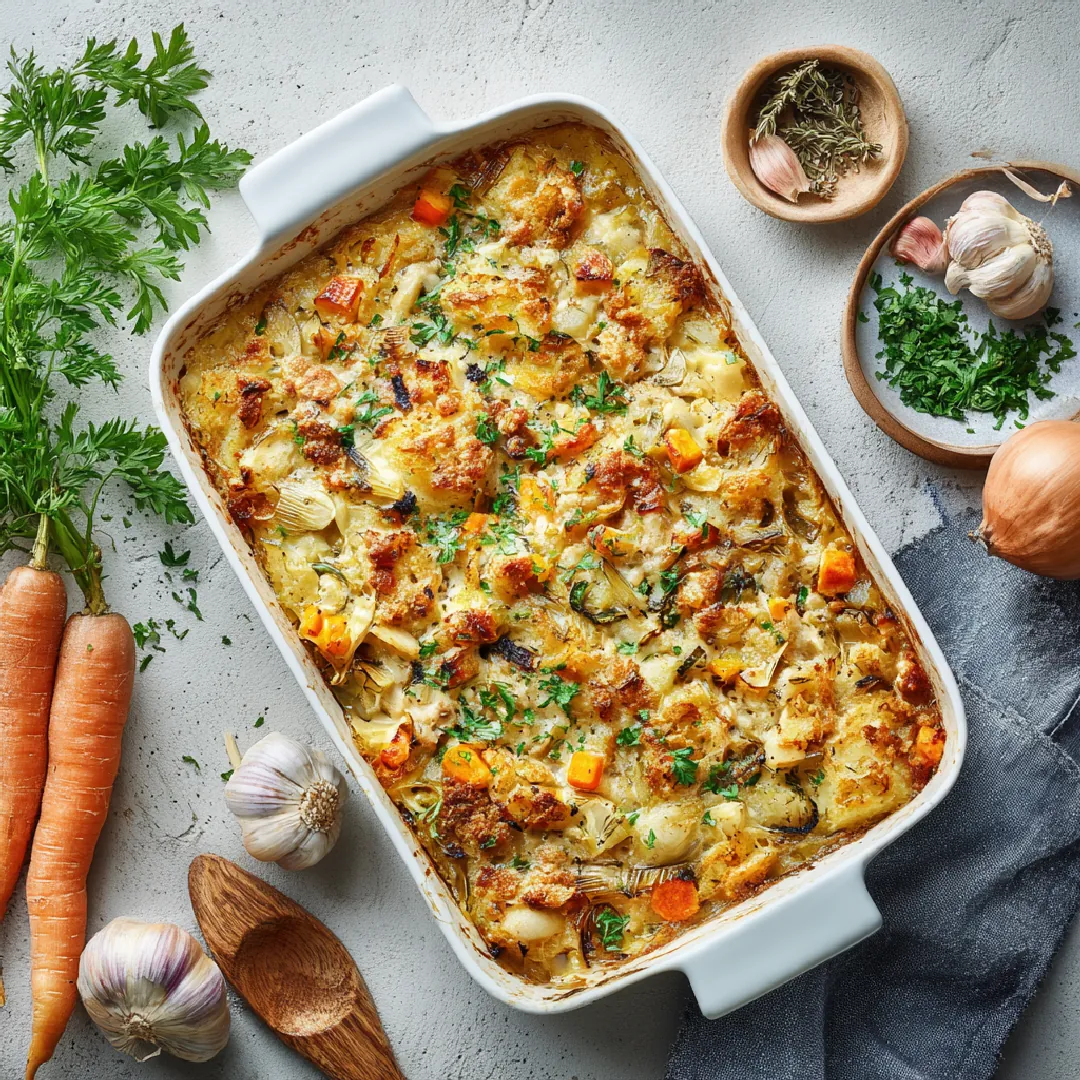Table of Contents
Introduction
The difference between baked beans and canned beans lies in their preparation, flavor, and versatility in cooking. Beans are a universal staple in diets worldwide, loved for their nutritional value, affordability, and adaptability in various cuisines. Among the most popular bean-based foods are baked beans and canned beans, both widely available and convenient to use.
While they might appear similar at first glance, baked beans and canned beans differ in their preparation, flavor, and usage in cooking. This distinction can influence your choice depending on your dietary needs, recipe requirements, and flavor preferences.
In this article, we’ll dive into what sets baked beans apart from canned beans. We’ll explore their nutritional profiles, preparation methods, storage differences, and how they’re used in popular recipes. By the end, you’ll have a clear understanding of which type of bean fits your kitchen needs best.
Baked Beans vs. Canned Beans: A Basic Overview
What Are Baked Beans?
Baked beans are a flavorful dish made by slow-cooking white beans, such as navy beans or haricot beans, in a rich, often sweet and tangy sauce. This sauce typically includes ingredients like molasses, brown sugar, tomato paste, mustard, and sometimes bacon or ham. While the name suggests traditional baking, many modern baked beans are simmered or stewed instead.
Baked beans are almost always sold pre-cooked in cans, making them convenient for quick meals. They’re a staple side dish in barbecues and comfort food recipes, loved for their hearty texture and bold flavors.
What Are Canned Beans?
Canned beans, on the other hand, refer to plain, pre-cooked beans preserved in water or a light brine. They’re available in a wide variety, including black beans, kidney beans, chickpeas, pinto beans, and more. Unlike baked beans, canned beans are not seasoned or flavored, making them a neutral ingredient suitable for an array of recipes.
Their versatility and ease of use make canned beans a kitchen staple. Whether you’re whipping up soups, salads, dips, or stews, canned beans offer a quick, ready-to-use option without the need for soaking or lengthy cooking.
Key Differences
| Feature | Baked Beans | Canned Beans |
|---|---|---|
| Preparation | Cooked with sauce or seasoning | Plain, cooked in water or light brine |
| Flavor Profile | Sweet, tangy, or savory | Neutral |
| Common Ingredients | White beans, sweeteners, sauces, spices | Any bean variety, water, and salt |
| Versatility | Ready-to-eat side dish | Ingredient for soups, salads, and mains |
Baked beans are often enjoyed straight from the can or heated as a side dish, while canned beans require additional seasoning and preparation to enhance their flavor.
Nutritional Profile Comparison
Calories and Macronutrients
When comparing baked beans and canned beans, one of the most notable differences lies in their calorie content. Baked beans are higher in calories due to their rich, flavorful sauce, which often contains sweeteners like brown sugar, molasses, or syrup. A half-cup serving of baked beans typically contains 150–200 calories, with around 12–15 grams of sugar.
Canned beans, on the other hand, are much lower in calories. A half-cup serving of plain canned beans contains about 100–120 calories, depending on the variety, with little to no sugar added. This makes canned beans a healthier choice for individuals monitoring their sugar intake or aiming for weight management.
Fiber and Protein
Both baked beans and canned beans are excellent sources of dietary fiber and protein, essential for maintaining digestive health and building muscle. A typical serving of either type provides about 6–7 grams of protein and 4–6 grams of fiber.
However, the added sugars and sodium in baked beans might offset some of their health benefits, particularly for individuals on restricted diets. Canned beans, being plain and unsweetened, provide a cleaner nutritional profile that’s easier to modify based on personal needs.
Additives and Sodium Content
Sodium is another important factor to consider. Baked beans are often high in sodium due to the added sauce and preservatives, with some varieties containing over 500 milligrams of sodium per serving. This can be problematic for individuals following low-sodium diets.
Canned beans also contain sodium, primarily from the brine used in preservation. However, rinsing canned beans under running water can reduce their sodium content by up to 40%, making them a more flexible option for those concerned about salt intake.
Summary of Nutritional Differences
| Nutritional Aspect | Baked Beans | Canned Beans |
|---|---|---|
| Calories | Higher, due to sauces and sugars | Lower, plain beans without additives |
| Fiber | 4–6 grams per serving | Similar, 4–6 grams per serving |
| Protein | 6–7 grams per serving | Similar, 6–7 grams per serving |
| Sodium | High | Lower if rinsed |
| Added Sugars | Present | None |
In summary, baked beans deliver bold flavors but come with added sugars and sodium, while canned beans offer a healthier, customizable base for various dishes.
Flavor and Preparation Methods

How Baked Beans Are Flavored
The hallmark of baked beans lies in their rich and savory sauce. This sauce typically balances sweetness, tanginess, and umami flavors. Ingredients like molasses, brown sugar, tomato paste, vinegar, and mustard contribute to their distinctive taste. Depending on the recipe or brand, baked beans may also include spices such as paprika or cloves for added depth.
Some variations of baked beans include meats, such as bacon or ham, which enhance the smoky, hearty flavor profile. This makes baked beans a popular side dish for barbecue meals, casseroles, and breakfasts alongside eggs and toast.
The Neutral Palette of Canned Beans
In contrast, canned beans have a completely neutral flavor. They are preserved in water or a light brine, which helps maintain the beans’ natural taste without overpowering it. This neutrality makes them incredibly versatile for a wide range of recipes.
For example, canned black beans can be used in Mexican dishes like burritos or chili, while chickpeas are a staple in Mediterranean dishes like hummus and falafel. With no pre-seasoning, canned beans act as a blank canvas that absorbs the flavors of the spices, herbs, or sauces added during cooking.
Cooking Techniques
Baked Beans: Baked beans are ready-to-eat right out of the can. They can be heated on the stovetop, baked in the oven, or even microwaved. Their rich sauce requires no additional seasoning, making them a quick and convenient option for meals.
Canned Beans: Canned beans may require some preparation before use. For instance, they are typically drained and rinsed to remove excess sodium and brine, which can alter their taste or texture. From there, they can be sautéed with garlic and onions, simmered in soups, or blended into creamy dips.
Flavor Comparison
| Aspect | Baked Beans | Canned Beans |
|---|---|---|
| Flavor Profile | Bold, sweet, tangy, and savory | Mild and neutral |
| Pre-Seasoning | Fully seasoned with sauces and spices | Plain, no added seasonings |
| Adaptability | Limited, due to pre-made flavoring | Highly versatile and customizable |
The choice between baked beans and canned beans often depends on your cooking goals. Baked beans save time with their pre-seasoned appeal, while canned beans give you creative freedom to tailor their flavor to your dish.
Packaging and Shelf Life
Shelf Life
Both baked beans and canned beans are known for their long shelf lives, making them reliable pantry staples. Baked beans, sold pre-seasoned and often in sauce, are preserved with additional ingredients that help extend their shelf life. Unopened cans of baked beans can last anywhere from 1 to 3 years when stored in a cool, dry place.
Canned beans have a similarly long shelf life due to their preservation in water or brine. When stored properly, unopened cans can also last for up to 3 years. However, their simpler preparation process and lack of added ingredients might make them slightly more sensitive to long-term storage conditions compared to baked beans.
Once opened, both baked and canned beans should be stored in an airtight container in the refrigerator. This is because proper storage prevents spoilage and extends freshness. Baked beans typically last 3–4 days due to their added sauce, while plain canned beans can last up to 5 days if properly stored.
Packaging
Baked beans are almost exclusively sold in cans, pre-cooked and sauced, ready for immediate consumption. In fact, the packaging often highlights the flavor profile, such as “original,” “barbecue,” or “smoky.” Some brands offer baked beans in single-serving containers for added convenience.
Canned beans are also sold in metal cans, but the packaging emphasizes variety rather than flavor. Labels might specify the type of bean (e.g., kidney beans, black beans, or chickpeas) and often include information on whether the beans are low-sodium, organic, or pre-seasoned.
Environmental Considerations
Metal cans used for both baked and canned beans are recyclable, which is an eco-friendly advantage. However, some brands are transitioning to BPA-free linings in their cans to address health concerns. If sustainability is a priority, consider checking the label for recyclable and BPA-free certification.
Key Comparison Points
| Feature | Baked Beans | Canned Beans |
|---|---|---|
| Shelf Life (Unopened) | 1–3 years | 1–3 years |
| Shelf Life (Opened) | 3–4 days | Up to 5 days |
| Packaging | Always in cans, pre-seasoned | In cans, emphasizing bean variety |
| Sustainability | Often recyclable; BPA-free options | Also recyclable; BPA-free growing common |
Both types of beans are packaged and preserved to maximize convenience and longevity. Your choice may depend on how quickly you plan to use the beans and their specific role in your recipes.
Uses in Cooking
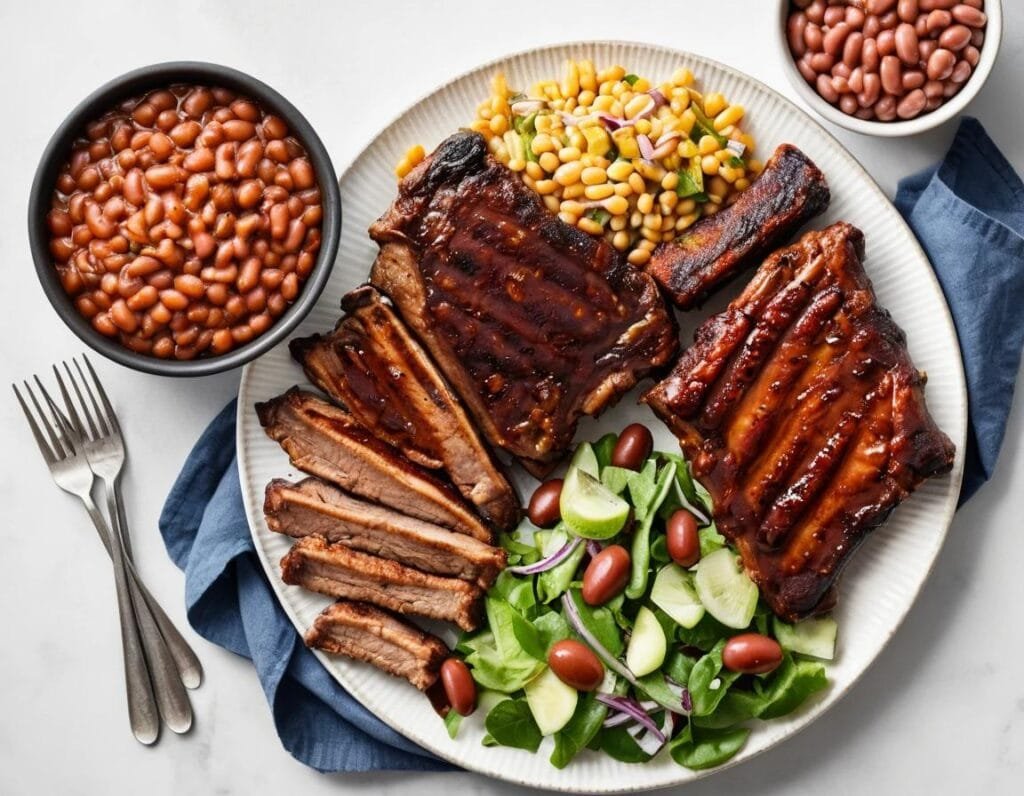
Popular Recipes for Baked Beans
Baked beans are a beloved comfort food and a staple at many gatherings, particularly barbecues and picnics. Their pre-seasoned, sweet, and tangy flavors make them a ready-to-eat side dish that pairs perfectly with grilled meats, such as ribs, sausages, and burgers. Here are a few common ways baked beans are used:
- Classic Side Dish: Simply heat baked beans and serve them alongside barbecue dishes or a traditional English breakfast, which might include eggs, toast, and sausages.
- Casseroles: Baked beans are often layered into casseroles with ground beef, cheese, and vegetables for a hearty, one-dish meal.
- Chili Add-In: Some recipes use baked beans as a substitute for plain beans in chili, adding a sweet and smoky twist to the dish.
- Baked Bean Pie: A traditional recipe in some cultures involves combining baked beans with mashed potatoes and cheese, baked to perfection for a warming meal.
Baked beans’ pre-seasoned nature limits their versatility but makes them a time-saving solution for meals where their rich flavor is desired.
Culinary Applications of Canned Beans
Canned beans, with their neutral taste, are a versatile ingredient that fits into virtually any cuisine. Here are some of the most popular ways to incorporate canned beans into your meals:
- Soups and Stews: Black beans, kidney beans, and white beans are ideal for adding protein and fiber to soups like minestrone, chili, or lentil stew.
- Salads: Canned beans make excellent salad ingredients. Chickpeas or kidney beans add texture and nutrition to leafy greens, grain bowls, and pasta salads.
- Dips and Spreads: Chickpeas can be blended into hummus, while black beans make a great base for creamy dips with a southwestern flair.
- Curries: Canned beans can be simmered in spiced sauces for hearty curries or stir-fries.
- Desserts: Surprisingly, canned beans are used in desserts like black bean brownies or chickpea cookie dough for added nutrition and texture.
Key Differences in Cooking Uses
| Usage | Baked Beans | Canned Beans |
|---|---|---|
| Quick Meals | Pre-seasoned, ready-to-eat | Requires seasoning or preparation |
| Side Dishes | Perfect as is for barbecues or breakfasts | Can be seasoned to complement any dish |
| Recipe Flexibility | Limited due to strong flavors | Highly adaptable for diverse recipes |
| Cuisine Types | Popular in Western and barbecue cuisines | Fits into global cuisines like Indian, Mediterranean, or Mexican |
Pairing Beans with Other Ingredients
For baked beans, pair them with:
- Barbecue meats like ribs and brisket.
- Eggs and toast for breakfast.
- Mashed potatoes and casseroles.
For canned beans, pair them with:
- Fresh vegetables like tomatoes, cucumbers, and bell peppers.
- Whole grains like quinoa, rice, or couscous.
- Protein-rich items like grilled chicken, tofu, or fish.
Whether you need a ready-to-serve dish or a versatile ingredient, both baked and canned beans have a place in your kitchen.
Frequently Asked Questions (FAQs)
Can I Substitute Canned Beans for Baked Beans?
Yes, you can substitute canned beans for baked beans, but you’ll need to add seasonings and sauce to mimic the flavor of baked beans. Start by simmering the canned beans with tomato paste, brown sugar, molasses, mustard, and your choice of spices. While this approach works, it may not fully replicate the rich, slow-cooked depth of flavor found in baked beans.
Are Baked Beans Healthy?
Baked beans can be part of a balanced diet, but their healthiness depends on the brand and preparation. Many commercial baked beans contain added sugars and sodium, which may not be ideal for individuals managing their sugar or salt intake. Opt for low-sugar or reduced-sodium varieties, or consider making baked beans from scratch to control the ingredients. For more info on this topic, click here.
Do Canned Beans Need to Be Cooked?
No, canned beans are pre-cooked and safe to eat straight out of the can. However, rinsing them before use is recommended to remove excess sodium and the metallic taste from the brine. Cooking canned beans with additional ingredients can enhance their flavor and texture for various recipes.
How Do I Reduce Sodium in Canned Beans?
To reduce the sodium content in canned beans, simply rinse them under running water for about 30 seconds. Studies have shown that this process can lower the sodium levels by up to 40%. Alternatively, you can purchase low-sodium or no-salt-added canned beans for a healthier option.
What Beans Are Used in Baked Beans?
Baked beans are typically made with small white beans such as navy beans, haricot beans, or Great Northern beans. These varieties are chosen for their creamy texture and ability to absorb flavors from the sauce.
Can I Make Baked Beans from Scratch?
Absolutely! To make baked beans from scratch, cook dried white beans until tender, then simmer them in a sauce made with tomato paste, molasses, brown sugar, mustard, and your choice of seasonings. Homemade baked beans allow you to control the sweetness, sodium, and other flavors, making them a healthier and customizable alternative to store-bought varieties.
Conclusion
Baked beans and canned beans may look similar, but their differences are significant when it comes to flavor, preparation, and usage. Baked beans are pre-seasoned, sweet, and ready to eat, making them perfect for barbecues and comfort meals. Canned beans, in contrast, are plain and highly versatile, suitable for soups, salads, dips, and global cuisines.
When choosing between the two, consider your recipe and dietary needs. Baked beans are a quick and flavorful option, while canned beans offer a healthier, customizable base for creative cooking. With both types of beans in your pantry, you’ll be ready to tackle a wide range of dishes with ease.

